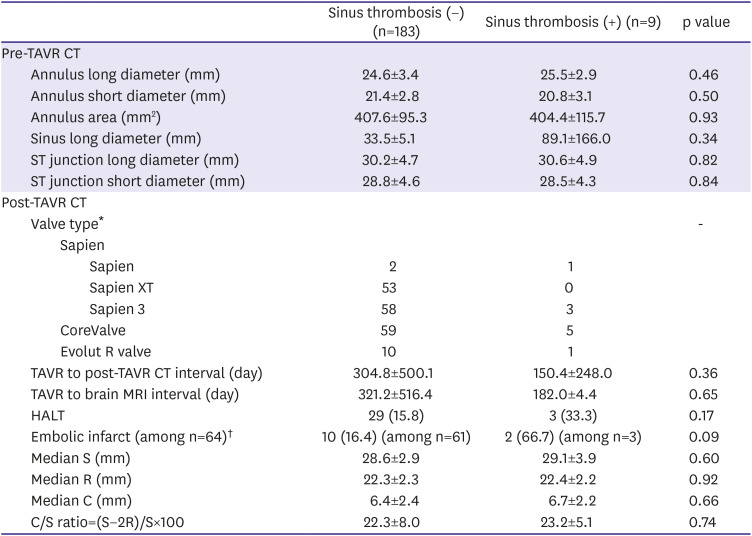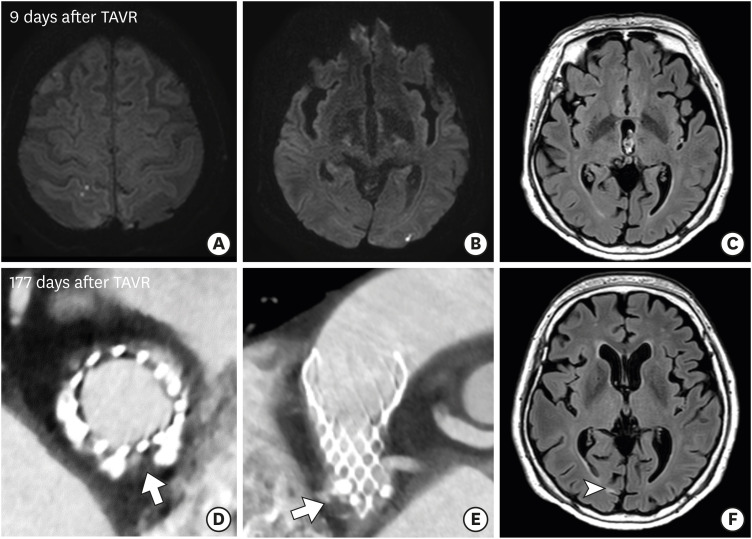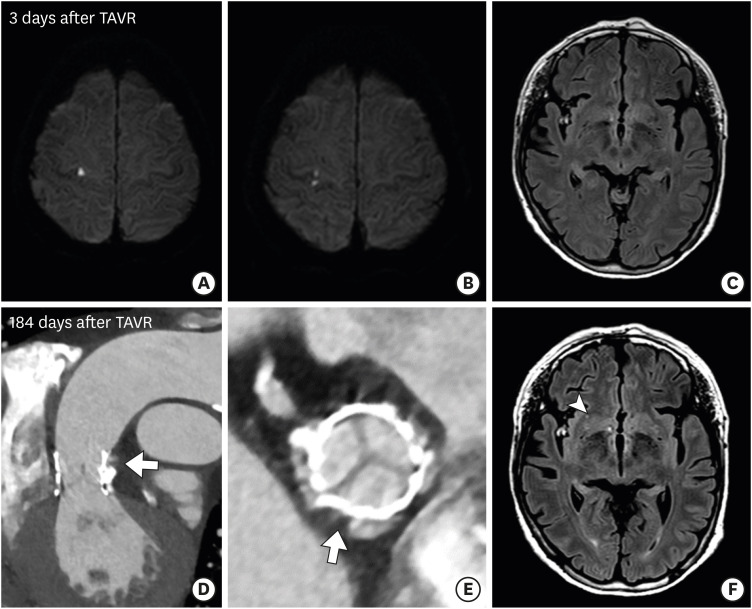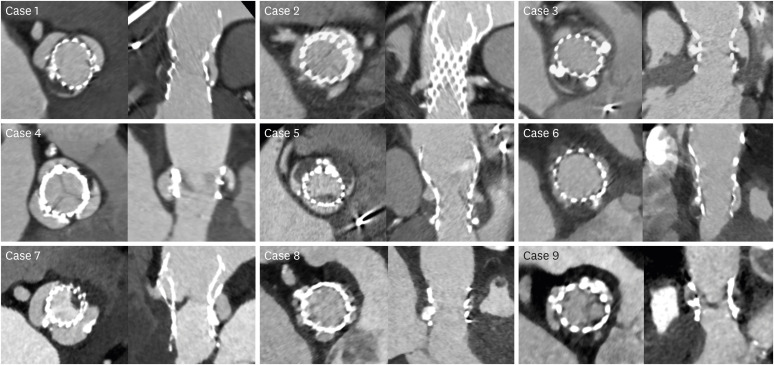1. Kapadia SR, Leon MB, Makkar RR, et al. 5-year outcomes of transcatheter aortic valve replacement compared with standard treatment for patients with inoperable aortic stenosis (PARTNER 1): a randomised controlled trial. Lancet. 2015; 385:2485–2491. PMID:
25788231.
2. Mack MJ, Leon MB, Smith CR, et al. 5-year outcomes of transcatheter aortic valve replacement or surgical aortic valve replacement for high surgical risk patients with aortic stenosis (PARTNER 1): a randomised controlled trial. Lancet. 2015; 385:2477–2484. PMID:
25788234.
3. Reardon MJ, Van Mieghem NM, Popma JJ, et al. Surgical or transcatheter aortic-valve replacement in intermediate-risk patients. N Engl J Med. 2017; 376:1321–1331. PMID:
28304219.
4. Smith CR, Leon MB, Mack MJ, et al. Transcatheter versus surgical aortic-valve replacement in high-risk patients. N Engl J Med. 2011; 364:2187–2198. PMID:
21639811.
5. Thyregod HG, Steinbrüchel DA, Ihlemann N, et al. Transcatheter versus surgical aortic valve replacement in patients with severe aortic valve stenosis: 1-year results from the all-comers NOTION randomized clinical trial. J Am Coll Cardiol. 2015; 65:2184–2194. PMID:
25787196.
6. Arnold SV, Lei Y, Reynolds MR, et al. Costs of periprocedural complications in patients treated with transcatheter aortic valve replacement: results from the placement of aortic transcatheter valve trial. Circ Cardiovasc Interv. 2014; 7:829–836. PMID:
25336467.
7. Muralidharan A, Thiagarajan K, Van Ham R, et al. Meta-analysis of perioperative stroke and mortality in transcatheter aortic valve implantation. Am J Cardiol. 2016; 118:1031–1045. PMID:
27634034.

8. Kapadia S, Agarwal S, Miller DC, et al. Insights into timing, risk factors, and outcomes of stroke and transient ischemic attack after transcatheter aortic valve replacement in the PARTNER trial (placement of aortic transcatheter valves). Circ Cardiovasc Interv. 2016; 9:e002981. PMID:
27601428.

9. Ducci A, Tzamtzis S, Mullen MJ, Burriesci G. Hemodynamics in the Valsalva sinuses after transcatheter aortic valve implantation (TAVI). J Heart Valve Dis. 2013; 22:688–696. PMID:
24383382.
10. Ducci A, Pirisi F, Tzamtzis S, Burriesci G. Transcatheter aortic valves produce unphysiological flows which may contribute to thromboembolic events: an in-vitro study. J Biomech. 2016; 49:4080–4089. PMID:
27836502.

11. Tsunaki T, Yamamoto M, Shimizu K, Suzuki T. Silent massive Valsalva thrombosis identified on contrast-enhanced multislice computed tomography following transcatheter aortic valve replacement. JACC Cardiovasc Interv. 2016; 9:2454–2455. PMID:
27838263.

12. ASCI Practice Guideline Working Group. Beck KS, Kim JA, et al. 2017 Multimodality appropriate use criteria for noninvasive cardiac imaging: expert consensus of the Asian society of cardiovascular imaging. Cardiovasc Imaging Asia. 2017; 1:156–165.

13. Kim YJ, Yong HS, Kim SM, Kim JA, Yang DH, Hong YJ. Korean guidelines for the appropriate use of cardiac CT. Korean J Radiol. 2015; 16:251–285. PMID:
25741189.

14. Mitchell C, Rahko PS, Blauwet LA, et al. Guidelines for performing a comprehensive transthoracic echocardiographic examination in adults: recommendations from the American Society of Echocardiography. J Am Soc Echocardiogr. 2019; 32:1–64. PMID:
30282592.

15. Willson AB, Rodès-Cabau J, Wood DA, et al. Transcatheter aortic valve replacement with the St. Jude Medical Portico valve: first-in-human experience. J Am Coll Cardiol. 2012; 60:581–586. PMID:
22657270.
16. Makkar RR, Fontana G, Jilaihawi H, et al. Possible subclinical leaflet thrombosis in bioprosthetic aortic valves. N Engl J Med. 2015; 373:2015–2024. PMID:
26436963.

17. Huded CP, Tuzcu EM, Krishnaswamy A, et al. Association between transcatheter aortic valve replacement and early postprocedural stroke. JAMA. 2019; 321:2306–2315. PMID:
31211345.

18. Kahlert P, Knipp SC, Schlamann M, et al. Silent and apparent cerebral ischemia after percutaneous transfemoral aortic valve implantation: a diffusion-weighted magnetic resonance imaging study. Circulation. 2010; 121:870–878. PMID:
20177005.
19. Davlouros PA, Mplani VC, Koniari I, Tsigkas G, Hahalis G. Transcatheter aortic valve replacement and stroke: a comprehensive review. J Geriatr Cardiol. 2018; 15:95–104. PMID:
29434631.
20. Van Mieghem NM, El Faquir N, Rahhab Z, et al. Incidence and predictors of debris embolizing to the brain during transcatheter aortic valve implantation. JACC Cardiovasc Interv. 2015; 8:718–724. PMID:
25946445.

21. Dasi LP, Hatoum H, Kheradvar A, et al. On the mechanics of transcatheter aortic valve replacement. Ann Biomed Eng. 2017; 45:310–331. PMID:
27873034.

22. Vahidkhah K, Azadani AN. Supra-annular valve-in-valve implantation reduces blood stasis on the transcatheter aortic valve leaflets. J Biomech. 2017; 58:114–122. PMID:
28511838.

23. Nagata Y, Miyamoto T, Komura M, et al. Giant organized thrombus in the left sinus of Valsalva causing intermittent left coronary obstruction: an unusual case of acute myocardial infarction. Circ J. 2004; 68:795–798. PMID:
15277741.
24. Hisatomi K, Yamada T, Odate T, Yamashita K. Intermittent coronary artery occlusion caused by a floating thrombus in the left coronary sinus of Valsalva of a patient with a normal aorta and protein C deficiency. Ann Thorac Surg. 2011; 92:1508–1510. PMID:
21958805.

25. Eguchi K, Ohtaki E, Misu K, et al. Acute myocardial infarction caused by embolism of thrombus in the right coronary sinus of Valsalva: a case report and review of the literature. J Am Soc Echocardiogr. 2004; 17:173–177. PMID:
14752493.

26. Stöllberger C, Seitelberger R, Fenninger C, Prainer C, Slany J. Aneurysm of the left sinus of Valsalva. An unusual source of cerebral embolism. Stroke. 1996; 27:1424–1426. PMID:
8711814.
27. Shahrabani RM, Jairaj PS. Unruptured aneurysm of the sinus of Valsalva: a potential source of cerebrovascular embolism. Br Heart J. 1993; 69:266–267. PMID:
8461229.

28. Nakata A, Yoshizawa H, Hirota S, Takazakura E. Sinus of Valsalva thrombosis causing renal infarction. Intern Med. 2006; 45:909–912. PMID:
16946573.

29. Mizuguchi Y, Takahashi A, Yamada T, Sakamoto S, Taniguchi N, Nakajima S. Acute myocardial infarction secondary to thrombosis in the right coronary sinus of Valsalva. Circ Cardiovasc Imaging. 2012; 5:547–548. PMID:
22811418.

30. Baumgartner H, Falk V, Bax JJ, et al. 2017 ESC/EACTS guidelines for the management of valvular heart disease. Eur Heart J. 2017; 38:2739–2791. PMID:
28886619.









 PDF
PDF Citation
Citation Print
Print




 XML Download
XML Download